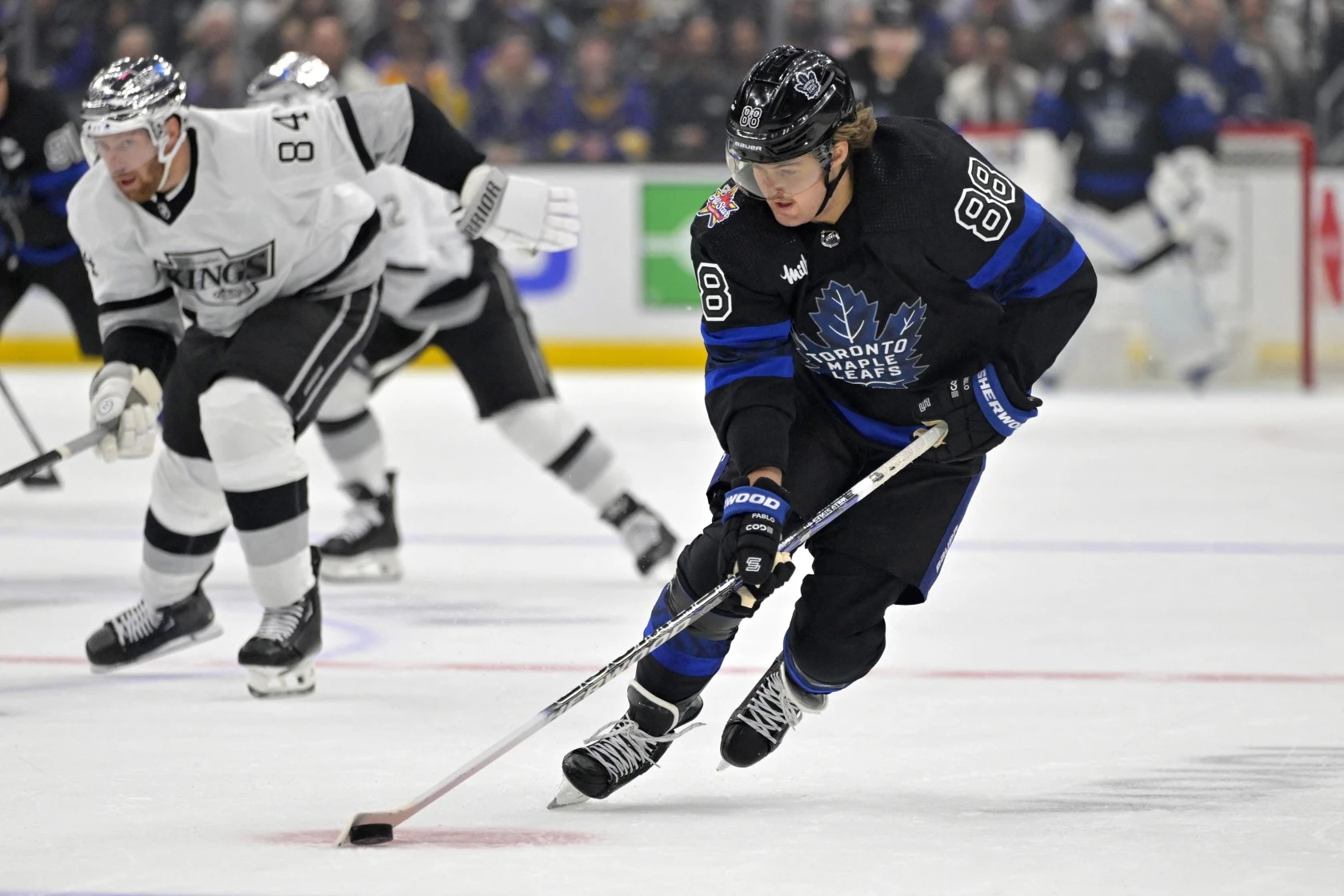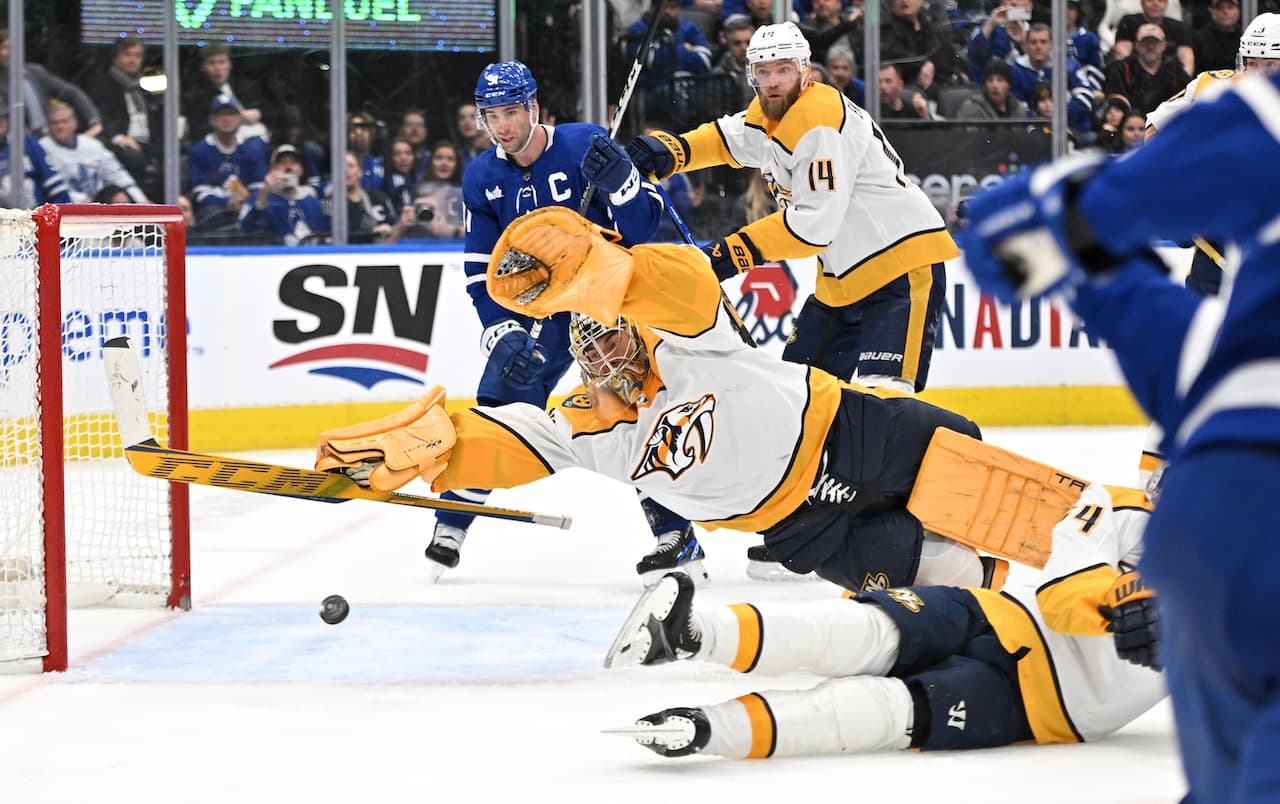
Paul Pidutti presented his research on the aging of UFA contracts in the NHL on Tuesday. Although he admitted that most of us already knew the answer is “poorly,” he did a great job of illuminating a few more details. Though I suggest reading the entire piece, let us examine the Maple Leafs’ current situation by parroting back his headlines:
First lesson learned: Aging is a brutal and steep curve. (The fact that production starts to fall at age 28 and gets much worse by age 32 serves as evidence for this.)
Takeaway 2: The average player misses about half of the schedule by the fourth year of a long-term UFA contract.
Lesson 3: Be prepared for both notable absences and poor performance.
Takeaway 4: Among the stronger results were offensive forwards and defensive defensemen.
Takeaway 5: The worst results were physical forwards, players who left better teammates behind, and those who were already declining.
Offers
Choose A Spot
No Code Is Required
We should anticipate a lot of that, but Paul has offered the proof to support it. In addition to being unkind, growing older also has an adverse effect on a hockey player’s body with every successive season. It makes sense that athletes would be more inclined to take their time recovering if they have some financial security.
It should not be shocking that offensive forwards are among the better choices for a longer career, even though the underperformance is directly related to the health factor as well. This is survivability, and it is this that defines NHL success more than any other archetype. Additionally, it seems that people with greater starting talent have a little bit longer before their decline becomes noticeable.
Conversely, defensive defensemen, who are usually not counted on for exceptional skill, will be valued for their depth because of their background in strong positional defensive hockey and their willingness to block shots.
I am at a loss for words when it comes to physical advancements. David Clarkson validates several of those conclusions.
Putting the Leafs in the picture
We will start with John Tavares since it seems like there are a few obvious places to start, and you would be surprised if I didn’t. The contract with John Tavares was always going to age poorly and come with a hefty upfront cost. Nevertheless, he has outperformed the aging curve in terms of points and well-being. Though it may not be pleasant to hear, Tavares was a successful free agent, or at least a wise choice. Clearly, Patrick Marleau wasn’t.
One thing that works in John Tavares’ favor is his great devotion to health and his ability to play the game without depending on speed. Tavares has not seen a decrease in footspeed, which is the most obvious aspect of it.
Even while Tavares’ next contract is not nearly as expensive, there will be a lot more risk involved if the Leafs decide to extend him for any period of time. It seems unrealistic to think of Tavares as a potential top six player any longer, at least not at center, after a season or two. Players like Steve Yzerman, Mike Modano, and Vinny Lecavalier all reached a breaking point where their output dropped, forcing them to either accept a smaller role or a bottom six, or if that was not possible, leave the game. While Yzerman benefited from an aging curve that occurred before the wage cap and retained veterans posed less of a risk, Modano and Lecavalier had more difficult choices. The Leafs will have to make a difficult decision on their current captain if Tavares does.

One bright spot in this situation may be the addition of Chris Tanev to a long-term deal; according to Paul’s research, defensive defensemen perform marginally better than other players. Like Tavares, Tanev’s straightforward but effective style of play does not depend on speed and will eventually win him over. Tanev’s history of injuries early in his career and his propensity for forcefully blocking shots will always cast doubt on his health, but the Leafs appear to be aware of what they are getting into and have purposefully employed term to get the desired cap hit. There is also some hope that a $4.5 million depth defenceman will not be as much of a burden as he is in 2024 if Chris Tanev stays on the active roster past the fourth year of his contract.
Oliver Ekman-Larsson’s deal may be cheaper and have a shorter duration, but it will still be of greater concern because he relies more on skill to produce the desired results and cannot afford to take as many steps back as Tanev can while still playing in the NHL.
Discussing the aging Leafs should also include Ryan Reaves, who perfectly embodies Takeaway #5. Age has affected his performance, and he does not work well with players who are less experienced. Reaves was never a good addition to the Leafs throughout his contract, but because of his locker room presence, being a Leaf has always come with a warning. The Leafs will be alright if they believe they are receiving that and do not mind that Reaves will only play half of the schedule.
The contract of Nylander
Paul Pidutti examined a lot of external UFA signings, but the Leafs have a monster inside signing in William Nylander, who they committed to for eight years at a $11.5 million average annual salary. At the conclusion of his contract, the Leafs will have committed more than 9% of their salary cap to Nylander, who will be 36 when he becomes a free agent, even if cap numbers soar during that entire period. That is a significant risk. To put things in perspective, Michael Nylander finished his NHL career with 33 points in 72 games at the age of 36.
Even while Nylander is unquestionably the best short-term option for the Leafs, the team can only offer its stars so many longer-term contracts. Not to be too controversial, but when Auston Matthews’ deal comes up at age 30, he will probably still be worth the risk. However, the Leafs also need to think about when they can afford to add Mitch Marner to their long-term cap commitments.
The Maple Leafs’ average age is more than 29 years old. In order to fill vacancies, the NHL has relied heavily on unrestricted free agency due to a small pool of prospects and the rarity of trades; yet, in the end, the Leafs are forcing themselves out of a window of opportunity to compete. Bringing in individuals who are on established declines and hoping the decline will not be too high has replaced guys with upside and repeatable performances.
It is difficult, but the Maple Leafs must strive to strike a balance between keeping a competitive window open and looking forward. It is a good start to move in the direction of signing players who were not eligible for restricted free agency. It would also be advantageous to find additional chances for young players in the bottom six and to prevent Ryan Reaves, Calle Jarnkrok, and David Kampf from preventing them from getting NHL experience. Another improvement would be to become less risk averse when making moves. The Leafs might also gain in the long run by eventually trading senior players for young players and acknowledging that there may be a temporary setback as a result.

Regarding aging curves and risk mitigation, it is important to recognize that there may be some survivorship bias and to take this into consideration, but it is also important to determine who has the best chance of living longer and who may be an anomaly. Someone puts in the effort, is fortunate to have few injuries, and takes better care of oneself. who can decline with more grace because of their flexible manner.

Leave a Reply